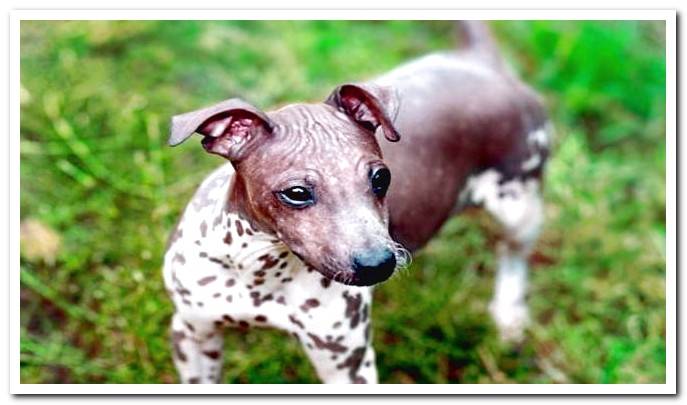
Although it may seem that these are genetically manipulated dogs, the truth is that there have been several breeds of hairless dog for much longer than the invention of genetic manipulation itself. So we can assure that these races are totally natural, the result of the whims of mother nature.
The benefits of dogs without hair on their body are very important, for people with allergies to dog hair or mites, people allergic to parasites, or people who just hate constantly cleaning dog hair around the house .
Index of contents
- 1 The Mexican Hairless Dog
- 2 Pila, the Argentine hairless dog
- 3 The Peruvian hairless dog
- 4 The Hairless American Terrier
- 5 The Chinese hairless dog, the Crested
- 6 The hairless Chihuahua
- 7 How to Care for a Hairless Dog
Different breeds of hairless dogs do not produce common allergies, they are also not prone to catching parasites like fleas or ticks and of course, they don’t mess the house with hairs every time they move. In reality there are so many benefits, what is strange is that there are so few races of this type.
From Dogsis.com we are going to review which are the most common dog breeds, which by their own genetics do not have hair on their body, their characteristics and of course the care they need. If you are thinking of having a dog without hairs, don’t miss it.
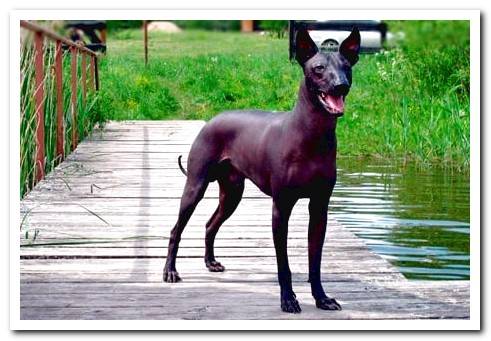
The Mexican Hairless Dog
Also known as Actezca or Xoloitzcuintle dog, the Mexican hairless dog is undoubtedly one of the oldest known breeds. Its origin dates back to the fourteenth century, where it was used as a spiritual dog or sometimes as food.
It is a small-medium-sized dog that reaches fifteen kilos in weight as an adult, its fur is dark in color and it does not have a single coat. He tends to have wrinkles throughout his body, making him an even more beautiful dog.
Loyal, super loving and playful, the Mexican hairless dog has become an example of what any dog should be, regardless of its breed. Although its origins are Mexican, it can be found anywhere in the world, including of course Spain, where it is increasingly fashionable.

Pila, the Argentine hairless dog
The Argentine hairless dog is also called Pila dog, it is very similar to the Mexican dog so it is suspected that it may be a direct descendant of it, bred for centuries in the American continent.
Its size as an adult barely exceeds thirty-five centimeters in height, so its weight varies between twelve and sixteen kilos. Her body is hairless and her skin is thick and dark, usually mottled with lighter highlights.
The Argentine Pila breed he is very sociable and intelligent, able to learn any trick with just a few training exercises. It is perfectly adapted to coexistence in small environments such as flats or apartments. It is certainly an excellent option as a hairless dog.

The Peruvian hairless dog
It is very likely that the Peruvian hairless dog is also a direct descendant of the Aztec dog, due to its multiple similarities. However, there is knowledge of the existence of this breed in the Peruvian zone long before colonization, so its origins are actually uncertain.
The size of the Peruvian hairless dog is somewhat higher than that of the other breeds mentioned so far, weighing close to twenty kilos in adulthood. At the cross its height can reach half a meter.
This breed of dog has barely any fur on its fur except for a few loose hairs on the top of its head. Its skin is dark although not uniform, presenting color variations in most specimens (mottled).
The character of the Peruvian hairless dog is calm and friendly, lively but respectful, tremendously sociable and mellow. It is one of those races that make themselves loved with their mere presence, totally recommended for all kinds of family environments.
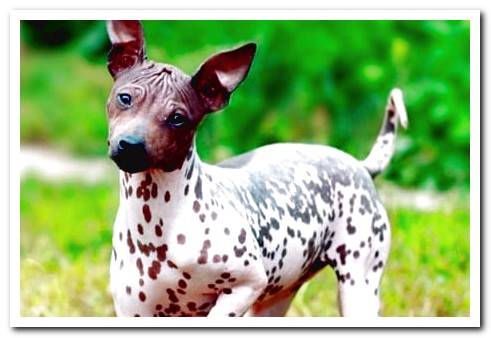
The Hairless American Terrier
If you already know the majority of Terrier breeds on the planet, how can Pit bull or the Staffordshire, you will be surprised to know that there is also a completely fur-free Terrier. Its origins are uncertain although it is suspected it may be a descendant of the Buzzard Terrier.
The size of the Hairless Terrier is somewhat smaller than what has been mentioned so far, reaching a maximum height of about forty centimeters at the withers and a weight of about twelve kilos, in adulthood.
The color of their skin is usually a mixture of light brown and flesh color, with specimens that have a uniform color being very strange. His character is social and playful, although how every Terrier is also vigilant and brave, something to keep in mind if he is not educated correctly, because he can appear dominant.
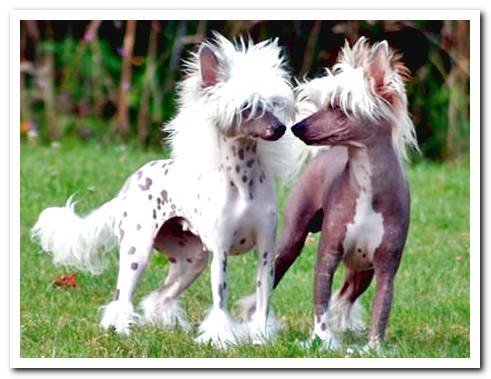
The Chinese hairless dog, the Crested
Depending on where and to whom it is consulted, its origins will be Chinese or African, although it is the Chinese continent that has seen this breed of dog develop the most, so we believe that its origins are Chinese.
It is a breed of dog without hair that actually can have fur, although only in certain areas such as the head, legs and / or tail. However, there are also hairy crests, completely covered in hair … the choice will be difficult since both specimens are beautiful.
The Chinese Crested is small in size, reaching a maximum of six or seven kilos in weight as an adult. They are elegant and stretched, almost catwalk models. With a very playful, happy and fun character, they become one of the best choices when choosing a breed of hairless dog.
More information in: Care and behavior of Chinese Crested
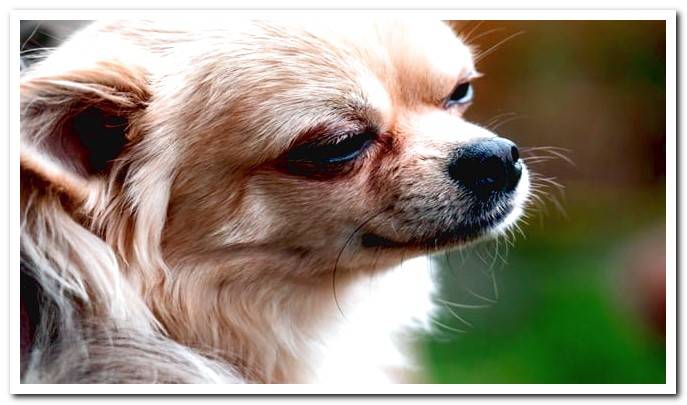
The hairless Chihuahua
Despite the gossip, the Hairless Chihuahua is not the result of a genetic experiment or laboratory practice. Although it is not an ancient or pure race like the ones mentioned above.
Its origins are quite recent, being the result of the crossing of a Chihuahua with fur with a breed of dogless fur, crossing his offspring over and over until he gets what we know today as the hairless Chihuahua.
It is, therefore, the result of several years of work in the breeding and selection of the Chihuahua breed, seeking as a final specimen a dog identical to the Chihuahu
a but without hair. Its size is totally mini, not reaching over three kilos of weight in adulthood.
If you like Chihuahuas and their cuddly, affectionate but rarely social character, this can be an excellent option to expand your family environment.
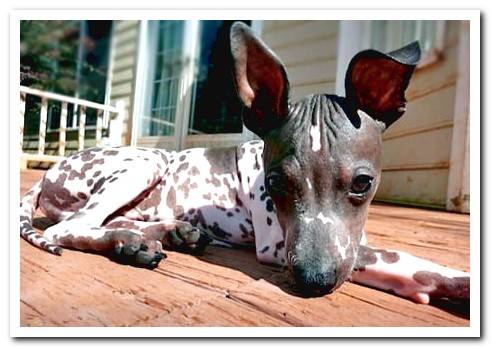
How to Care for a Hairless Dog
Dogs without hair have a great number of advantages, but also drawbacks, so we must know in depth everything necessary so that they do not suffer from the absence of their hair.
Advantages of hairless dogs:
- They do not shed hair, they do not dirty and they do not promote allergies.
- They are practically free of mites, compared to dogs with fur.
- Fleas and ticks will not want to stick to a but without hair, they prefer them with hair.
- It is not necessary to bathe them as often, they do not get so dirty.
Disadvantages of hairless dogs:
- They need specific care for their skin, sunscreen and moisturizers.
- They are not suitable for extreme climates, South or North of Spain. They require stable temperate climates.
- Some dogs mistake them for cats for their lack of fur and can be targeted for attacks.
In general, hairless dogs are like any other type of dog, of any breed, but with the problem that we must pay special attention to the care of their skin. The sun can burn them and damage their skin a lot, in the same way that the cold can crack it and cause pneumonia.
Taking care of their skin whether it is hot or cold, they do not need more care apart from a good diet and the typical veterinary checks of any breed.
